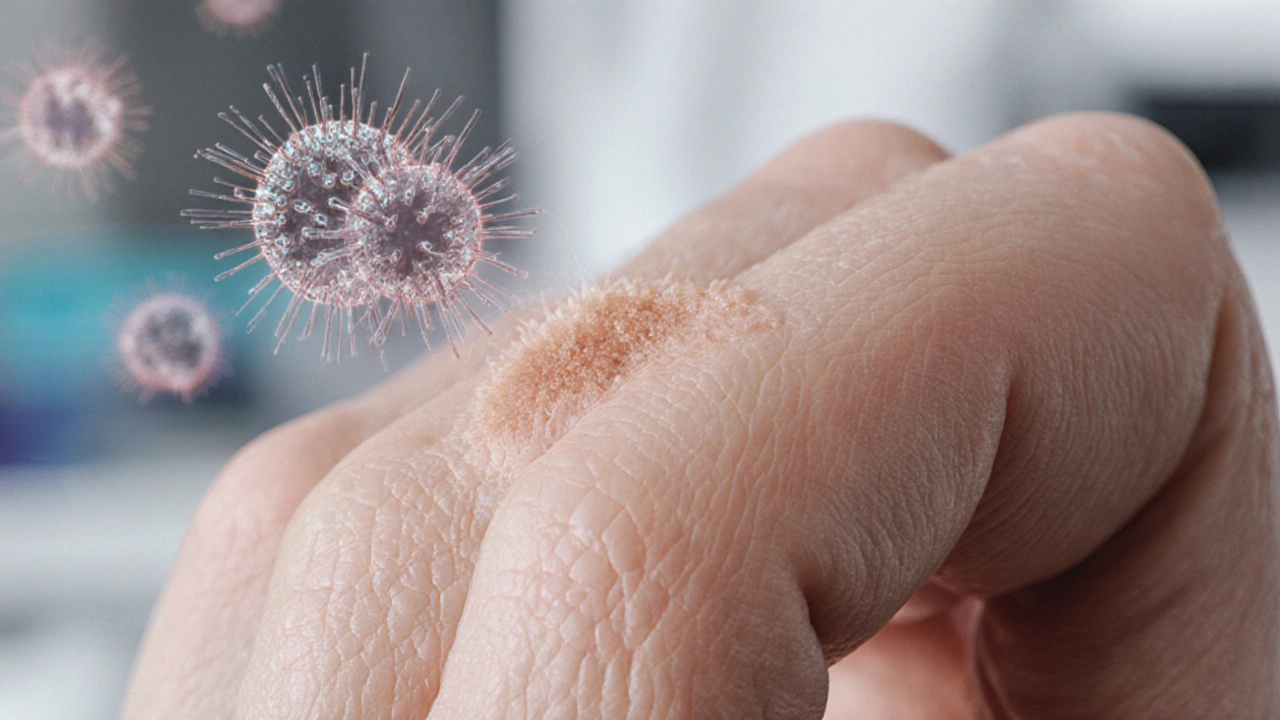
Learn how HPV causes common skin warts, identify risk factors, explore treatment options, and discover preventive steps, including vaccine insights.
When dealing with warts, benign skin growths caused by a viral infection, you quickly learn they’re more than a cosmetic nuisance. Also known as cutaneous papillomas, they often appear on the hands, feet, or face. The main culprit is human papillomavirus (HPV), a group of viruses that infect skin cells and trigger rapid cell growth. Common ways to get rid of them include cryotherapy, freezing the wart with liquid nitrogen and applying topical salicylic acid, a keratolytic that softens the wart for removal. A strong immune response—your immune system, the body’s defense network that detects and fights viral infections—can sometimes clear warts without any treatment.
Warts are essentially overgrowths of warts caused by HPV infecting keratinocytes, the skin cells that produce keratin. This virus hijacks the cell’s normal cycle, leading to thickened plaques that vary in size and shape. Treatment choices depend on wart type—common, plantar, flat, or filiform—and on how your skin reacts. Over‑the‑counter options like salicylic acid pads work by gradually eroding the lesion, while prescription‑strength agents such as imiquimod boost the local immune response. For stubborn cases, clinicians may recommend laser therapy, which vaporizes the tissue, or intralesional immunotherapy, where a small amount of antigen is injected to provoke a systemic attack on the virus. Each method has its own risk profile, so discussing side effects—like redness, pain, or pigment changes—is crucial before deciding.
Preventing new warts is often about good skin hygiene and limiting exposure to the virus. Regularly washing hands, keeping feet dry, and avoiding direct contact with existing warts can reduce spread. Sharing towels, razors, or shoes creates a perfect pathway for HPV, so it’s best to use personal items. In some regions, the HPV vaccine, originally designed to prevent cervical cancer, also lowers the risk of cutaneous warts by targeting the viral strains most often responsible for skin lesions. For people with weakened immune systems, such as those on chemotherapy or with chronic conditions, physicians may advise more aggressive monitoring and early treatment to keep wart outbreaks under control. By combining lifestyle measures with appropriate medical care, you can keep warts from becoming a recurring problem.
Below you’ll discover a range of articles that dive deeper into each of these topics—treatment options, side‑effect management, prevention strategies, and the latest research—so you can choose the best plan for clear, healthy skin.

Learn how HPV causes common skin warts, identify risk factors, explore treatment options, and discover preventive steps, including vaccine insights.